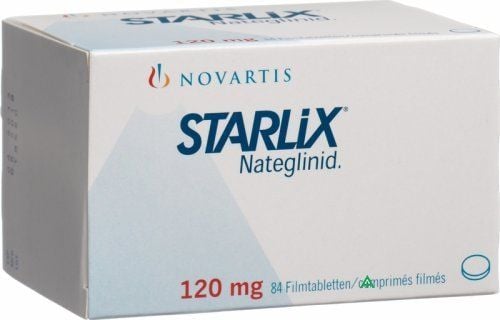This is an automatically translated article.
The article is professionally consulted by Master, Doctor La Thi Thuy - Cardiovascular Center - Vinmec Central Park International General Hospital
In recent years, the quantitative NT-proBNP test has been widely used in the diagnosis, treatment monitoring, prognosis and screening of heart failure and many other cardiovascular diseases.
1. What is NT-proBNP?
NT-proBNP (N-terminal pro B-type natriuretic peptide) is a peptide consisting of 76 amino acids. The precursor of NT-proBNP is a pre-pro-peptide consisting of 134 amino acids. The pre-pro-peptide splits into: proBNP (108 amino acid residues) and a signal peptide fragment (26 amino acid residues). When released into the blood, proBNP is hydrolyzed by a protease enzyme called furin, forming NT-proBNP (76 amino acids) and BNP (32 amino acids).In humans, NT-proBNP and BNP are found in high concentrations in left ventricular muscle and small amounts in atrial and right ventricular muscle. With increased hemodynamic compression of the heart (wall dilatation, hypertrophy or increased pressure exerted on the heart wall), NT-proBNP will increase release. NT-proBNP increased concentrations in patients with heart failure.
NT-proBNP is eliminated passively, mainly by the kidneys. The NT-proBNP quantitative test is more sensitive and more common than BNP in the diagnosis of heart failure.
2. When is a quantitative NT-pro BNP test ordered?
Cardiology NT-proBNP test is indicated in the following cases:2.1 Early diagnosis and differential diagnosis of heart failure Determine to exclude heart failure in patients with acute dyspnea; Confirm or exclude heart failure in patients at risk for heart failure (people with diabetes, hypertension, coronary artery disease) or patients with diagnosed heart failure, differential diagnosis of heart failure with other other medical conditions (eg, lung disease); Diagnosis of heart failure in cases where clinical or ultrasound examination is difficult to perform (for obese people, children or the elderly); Diagnosis of heart failure in pediatric and neonatal patients with congenital heart disease; Differential diagnosis of elevated NT-proBNP in patients with non-heart failure conditions such as cardiomyopathy (myocarditis, hypertrophic cardiomyopathy, infiltrative cardiomyopathy), valvular heart disease (narrowing and mitral regurgitation, stenosis) and aortic regurgitation), anemia, atrial arrhythmias, serious illness (burn shock, septic shock, respiratory distress syndrome in adults), ischemic stroke, cardiopulmonary syndromes ( congenital heart disease, sleep apnea, pulmonary hypertension, etc.). 2.2 Monitoring the progression and effectiveness of heart failure treatment Long-term follow-up of patients with chronic heart failure; Assess the risk of heart failure recurrence, determine the toxicity of the drug used or the effectiveness of treatment. 2.3 Prognosis of heart failure Prognosis of heart failure in patients with dyspnea or patients with diagnosed heart failure; Prognosis of heart failure in pediatric and neonatal patients with congenital heart disease. 2.4 Screening for heart failure in the general population Screening in the community, focusing on high-risk groups such as people with diabetes, coronary heart disease, hypertension,... Risk screening heart failure in patients before and after organ surgery; Screening for early detection of the risk of heart failure in subjects at risk of cardiovascular disease such as obesity, diabetes, hypertension, kidney failure, coronary artery disease, ...

Xét nghiệm NT-proBNP tim mạch học được chỉ định trong các trường hợp sàng lọc suy tim
3. Reference values and changes of NT-proBNP in heart failure
The normal human reference value of plasma NT-proBNP will change with age. Specifically, in people under 50 years old is 50 pg/mL, 50-75 years old is 75-100 pg/mL and over 75 years old is 250-300 pg/mL. A common cut-off point for both sexes is 125 pg/mL.The optimal cut-off point to exclude chronic heart failure is NT-proBNP < 125 pg/mL; The optimal cut-off point to exclude acute heart failure with dyspnea is NT-proBNP < 300 pg/mL; The optimal NT-proBNP cut-off point for diagnosing acute heart failure in patients with dyspnea by age: <50 years old is >450 pg/mL, 50-75 years old is >900 pg/mL, and over 75 years old is > 1800pg/mL. mL.
4. Significance of NT-proBNP . quantification
-NT-proBNP helps to screen for heart failure in high-risk patients with no symptomsSensitivity 92-99% High negative predictive value - NT-proBNP < 125 pg/mL: low risk of heart failure
- NT-proBNP in the range of 200 pg/mL - 300 pg/mL: echocardiography is required Acute : The concentration of NT-proBNP in people with acute heart failure with dyspnea in the age groups under 50, from 50 to 75 and over 75 is > 450 pg/mL, > 900 pg/mL and > 1800pg, respectively. /ml. In patients with acute heart failure, NT-proBNP levels > 5180 pg/mL have a predictive value of 76-day mortality of 95%; Chronic heart failure: Quantitative NT-proBNP measurement is repeated every visit, risk of severe prognosis when NT-proBNP > 1000pg/mL; Stable and unstable myocardial ischemia: Quantitative measurement of NT-proBNP should be repeated 24 - 72 hours, persistent elevation of NT-proBNP levels > 250 pg/mL warns of poor prognosis. NT-proBNP should be repeated weekly or monthly depending on the specific situation; Renal disease: Elevated plasma NT- proBNP occurs in patients with chronic kidney disease due to decreased renal clearance of this peptide and confirms cardiac disease in these subjects; Pediatric and neonatal patients: The age cut-off point can be used as for individuals younger than 50 years of age with NT-proBNP levels > 450 pg/mL and NT-proBNP < 300 pg/mL to exclude heart failure in children. ; Heart failure in obese patients: In obese people, plasma NT-proBNP levels decrease due to increased degradation and decreased NT-proBNP synthesis in cardiomyocytes. For the definitive diagnosis of heart failure in overweight or obese individuals, NT-proBNP cut-offs of 491 pg/mL in overweight individuals or 343 pg/mL in obese individuals can be used; Some other diseases other than heart failure: cardiomyopathy, valvular heart disease, anemia, atrial arrhythmias, bronchopulmonary syndromes, ischemic stroke, diabetes, hypertension,... The causes of increased NT-proBNP in these diseases are mainly due to ischemic or hypoxic myocardial tissue.
5. Where is a good diagnosis of heart failure?

Tại Bệnh viện Đa khoa Quốc tế Vinmec Times City, Gói sàng lọc suy tim đã được triển khai thành công và nhận được nhiều phản hồi tích cực
Customers in the following categories should be screened for heart failure as soon as possible to get an accurate diagnosis and timely treatment plan:
The group of customers without symptoms of heart failure: includes patients hypertension, ischemic heart disease, congenital heart disease, valvular heart disease, diabetes, arrhythmia, thyroid disease, chronic obstructive pulmonary disease, men over 45 years old, women over 50 years old, have smoking, alcohol abuse, obesity The group of customers with heart failure symptoms: such as shortness of breath, shortness of breath, prolonged dry cough, chest heaviness, fatigue, dizziness, dizziness, fainting spells, Tachycardia, leg edema, less urination, pain in the liver,... At Vinmec Times City International Hospital, the Heart Failure Screening Package has been successfully implemented and received many positive feedbacks from customers. products thanks to its outstanding advantages. Participating in the package, customers will receive: Cardiology specialist examination, complete blood cell analysis by automatic counter, Glucose, Uric Acid, Creatinine, Albumin, NT-proBNP, LDL-C, HbA1c, Triglyceride, Cholesterol, AST (GOT) activity measurement, ALT (GPT) activity measurement, electrolytes, electrocardiogram, 24-hour total urinalysis, straight chest x-ray, echocardiogram, transpericardial chest wall, stress echocardiography, ionized calcium quantification,...
Choosing Vinmec Times City to screen for heart failure brings many benefits to customers:
The medical team is the first expert industry, highly qualified, wholeheartedly for patients; Comprehensive and professional medical examination, consultation and treatment services; System of modern equipment, supporting effective diagnosis and treatment of cardiovascular diseases; Modern medical examination and treatment space, maximum sterilization, ensuring privacy. Master. Dr. La Thi Thuy is currently an interventional cardiologist at Vinmec Central Park International General Hospital. Graduated as a general practitioner from the University of Medicine and Pharmacy in Ho Chi Minh City. Ho Chi Minh City in 2010, and graduated with a master's degree in cardiology from the University of Sheffield (UK). Doctor Thuy Trained in practicing cardiology at Royal Hallamshire hospital. The doctor has worked at the Department of Interventional Cardiology, Cho Ray Hospital from 2012-2016.
Please dial HOTLINE for more information or register for an appointment HERE. Download MyVinmec app to make appointments faster and to manage your bookings easily.













